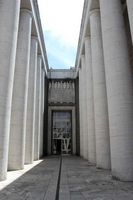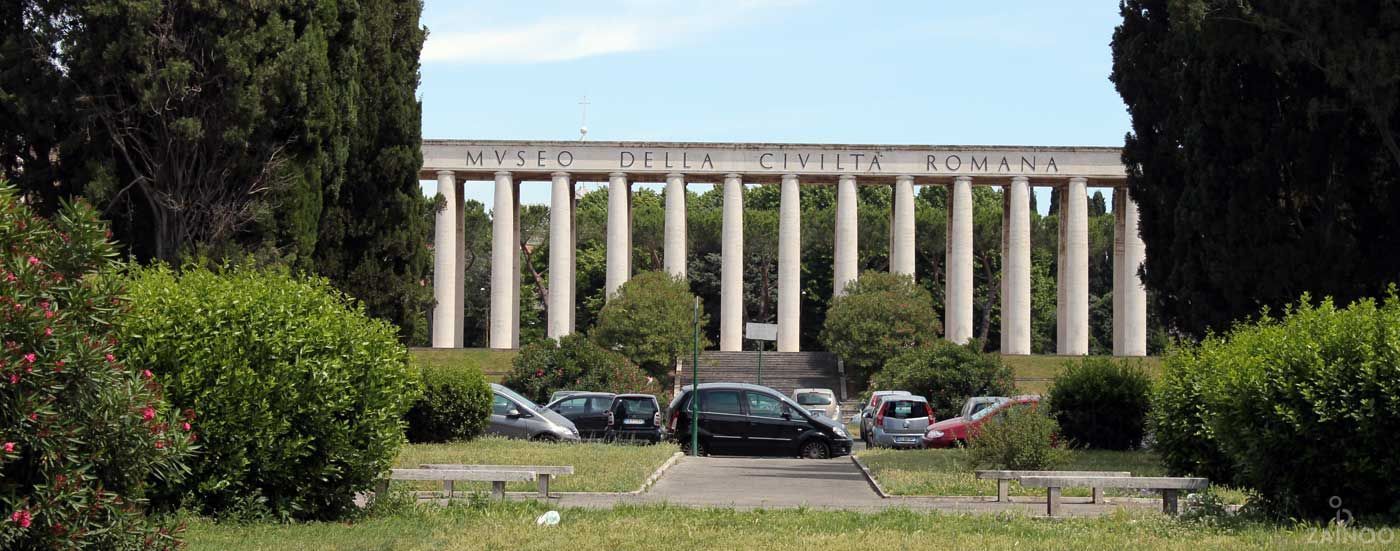E.U.R. - Esposizione Universale di Roma
Public place
E.U.R. - Esposizione Universale di Roma
Monumental satellite city for the World Expo 1942
In 1938 Benito Mussolini decided to plan a World Expo for 1942. Under the motto "Olympics of civilizations", the work on a satellite city between the Roman capital and the sea started that would dwarf all previous cities in size and design. On the 420-hectare area a monumental and unparalleled Fascist city was created with wide streets, residences, offices, public buildings, squares, parks and various recreational facilities. Although the World Expo in 1942 did not take place because of the Second World War, the construction works were resumed after 1945 and the city was completed. To this day, the EUR is considered to be one of the best examples of modern town planning, which was partially copied in the construction of the capital Brasilia in South America. The most important and most impressive building is the neoclassical Palazzo della Civilta del Lavoro. The six-storey 65-metres high building with its round arches is reminiscent of the Colosseum in Rome.
Museo della Civilta Romana: Roman history at a glance
In addition to these products of perfect urban planning, there are some museums in the EUR. The most important and most significant is the Museo della Civilta Romana. The monumental building at the Piazza Giovanni Agnelli has been given to the city of Rome by the Fiat factories. The most impressive thing about the museum is that not a single work in the 59 halls is an original. Models, reproductions and plaster casts of all those items that made up the Roman culture are here to be admired and provide a comprehensive insight into the political, military, economic and even family life of the Romans. Even the most important Roman monuments are here as reconstructions in small models and give a good idea of how the actual ruins once looked like in their full glory. Particular highlights are a complete model of ancient Rome at the time of Emperor Constantine and the casts of the Bands of Trajan's Column, which were built by Napoleon in 1861.
Entrance
Admission Museo della Civiltà Romana: € 6,50







Tweet